How to make a mind map: The best mind mapping techniques and tools
Before you can do anything with an idea, you’ve got to put it down on paper, or in some kind of a digital setting. Mind maps are perfect if you want to create visual links across your thoughts, spending minimum time on the visualization process. Let’s dive into mind mapping strategies that make it work.
What are mind maps?
Mind mapping, also called idea mapping, is a technique for capturing information and visualizing thought processes, invented by the author, speaker, and self-described brain expert, Tony Buzan.
Mind maps can be used to aid learning, to present information, or as a tool for brainstorming and developing ideas. Every thought map has a visual element to it, allowing you to make connections, remember links, and spark new ideas.
What is a mind map that actually helps you reach your goals? Depending on why you need to visualize ideas, these might be the answers:
- For entrepreneurs, a mind map is a tool for planning and presenting projects, estimating the benefits of a business plan, and drawing conclusions. It gives you the scope to identify challenges and roadblocks, map various aspects of the journey, and plan your next steps.
- An extensive visualization helps students and academics thoroughly explore the topics they are working on.
- Whether you’re working or studying, a mind map is a good way to train focus and concentration.
- The technique is also appreciated by creators — like painters and writers, while it helps create new things in non-boring settings.
Mind mapping rules
Well, we just said mind mapping is pretty much about creating amidst chaos. That’s true. But only in case the chaos is based on the rules that work. Every mind mapping tool covers a set of instruments, which define the rules of the game. But there are also those you can use with any software to visualize ideas more effectively:
Rule 1: Always put the main idea in the center of your screen. No matter what shape your mind map embraces, the main thought will be easier to discover if it lays at the core.
Rule 2: Use short phrases in extensive mind maps. Whenever possible, replace text with symbols, emojis, or illustrations.
Rule 3: Personalize connections. For instance, MindNode app allows to use contrastive styles for different nodes, and even enable Smart Layout to organize connections in the best way.
Rule 4: Build hierarchies of meaning. Some ideas will definitely prevail over the others. Make sure your mind map reflects that. If the tool you’re using doesn’t allow hierarchical organization, vary the size of words, font styles, or use different colors.
Rule 5: Use tools with note-taking functionality for studying. Short phrases won’t be enough if you need to visualize the events of World War I. For such purposes, get an e-reader like MarginNote, or any other digital tool with the support of extensive note-taking.
How to create a mind map?
You can create a mind map by hand. If possible, use a large piece of paper, either on a flipchart or white board, if you want to make changes before committing your thoughts to something more permanent.
However, the only good way to track the evolution of your ideas — how they change and grow into something bigger — is via mind map apps. These tools enable you to generate and visualize thoughts, without worrying about the form. You can always change, edit, remove, connect, add mind map images, etc.
If you don’t know where to start, MindNode comes with extensive visual functionality and the ability to share with others and yourself. On top of that, you can try MarginNote, which will do a good job with notes. As a nice perk, both apps are available on Setapp, a platform that hosts 240+ Mac, iOS, and web apps for almost any task. You can try them all for free for seven days.

But let's get back to mind map creation. Here is a quick guide on how to draw mind maps.
Step 1. Create your central idea
Every mind map starts with a central idea. That can be a topic you want to explore, the theme for a presentation, or an idea you want to develop. Start with brainstorming before beginning to draw.
Your central idea - main goal or challenge - should be represented visually, in the center of your mind map, in a way that grabs attention and makes it clear what you're describing. It can either sit at the left of your mind map, with branches expanding in front, above, and below it, or it can be right in the middle of the page, with branches expanding from all directions.
Notice: MindNode calls it a topic, but it's the same thing. It's automatically placed on the page when you open a new blank document. Double-click the text to rename it with your central idea.
Step 2. Add top-level themes
Think about your goal or challenge from the highest level.
What are the key, the driving elements to what you are trying to achieve?
If you are creating a marketing strategy, for example, your top themes wouldn't include social media, blogs, and landing pages. You would start with the message and audience (who are they, personas, etc.), and other key themes to consider, before diving into the detail.

In the same way that working on an academic paper involves understanding the key questions to answer after you've done the background reading to give you a top-level overview of the subject. Start with the big-ticket items, then move into the detail.
To create a secondary node, or sub-topic as MindNode calls it, click on the central topic and tap the Tab key. To add more sub-topics, keep tabbing with the central node selected. To add topics branching off the sub-topics, click on a sub-topic and hit Tab. These steps work for all popular mind mapping tools.
In the mind mappers, you can change the shape of the node, as well as its color and the thickness of its border. You can also change the font, color, weight, case, and size of the text.
Step 3. Sub-branches and notes
Here is where you outline the smaller details, e.g. how you answer the big questions and what methods you use to achieve your marketing plan objectives.
Don’t worry if every branch of the mind map fills up with a lot of ideas. You don't have to implement everything you write down. Mind maps are a chance to unlock what is possible before focusing on the implementation element of the plan.
And if having lots of notes is, actually, your goal, you need a note-taking app. In MarginNote, you’ll be able to analyze huge pieces of information — yes, books work as well — while adding annotations and capturing notes on the go.
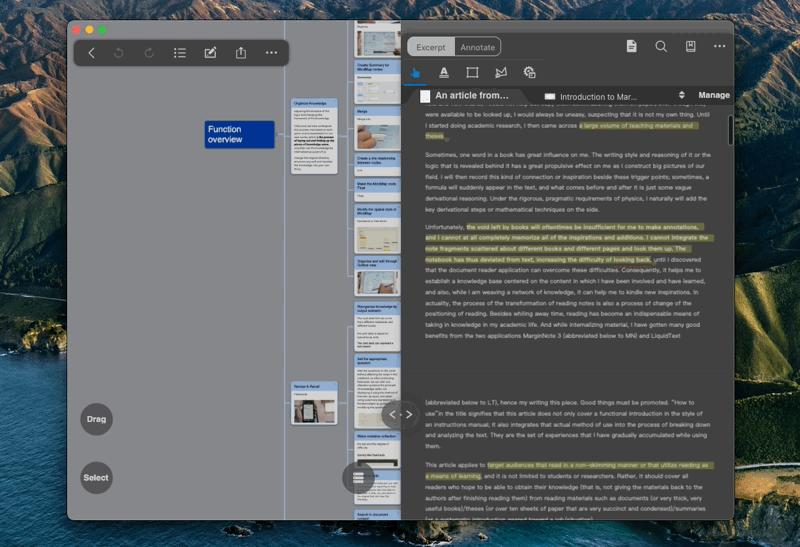
Remember we said earlier that the visual elements of a mind map are important? Here's where you add them. Almost all mind mapping tools have a collection of clip art and icons you can add to your mind map. Also, you can add any image you like, provided it's stored on your Mac. With MindNode, you can instantly jump into Photos, pick the image, and adjust it to the size and format of the nodes — right in the mind map.
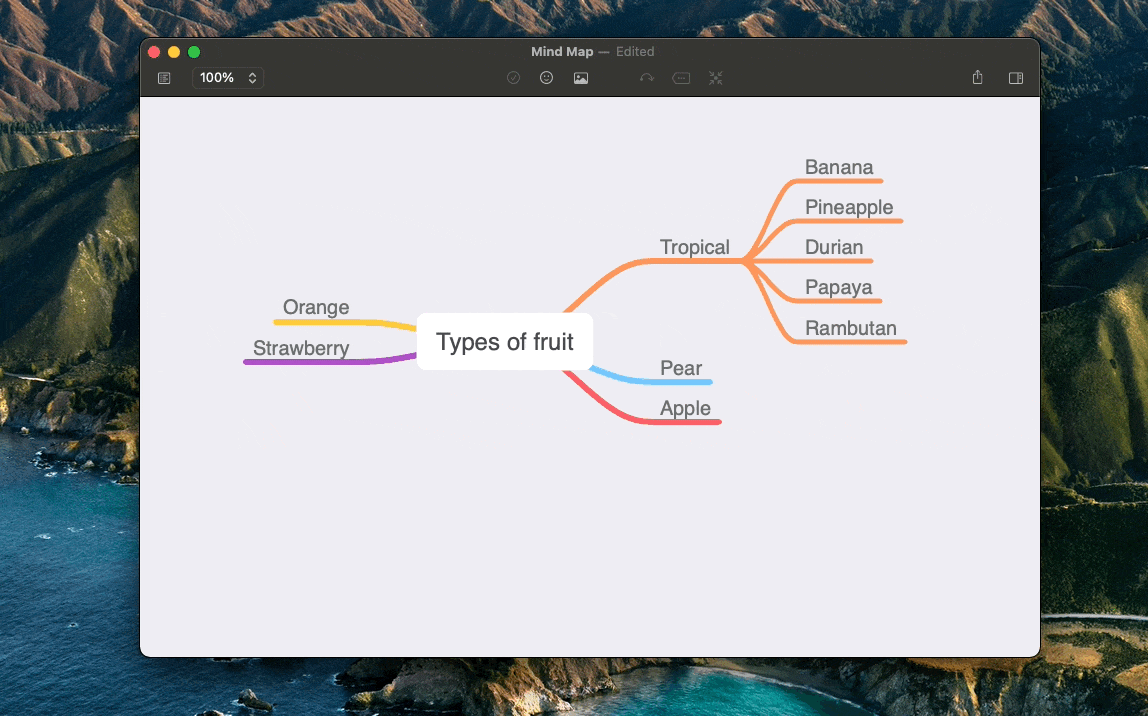
Then, add some information about a topic — notes, keywords, and phrases — like who assigned to complete the task and when it must be completed. Images are great for conveying a message, but sometimes you need to add more detail.
#3: Greater than the sum of its parts
A finished mind map should outline all of the ways you could achieve the answer/solve the problem at the center of the map. It doesn't mean you will do everything written down, but this should prove a useful starting point. Everything on the mind map should lead back to the core theme.
You can now add more topics and add images and other details to them to flesh out your mind map. As well as the elements we've discussed, you can add markers to each topic, such as a day of the week icon, a progress meter, or a priority badge. Using icons and images in this way is a great way of conveying detail in your mind map without adding too much text. Don't be afraid to experiment with themes and colors. Remember, the idea is to make it stand out and be visually stunning!
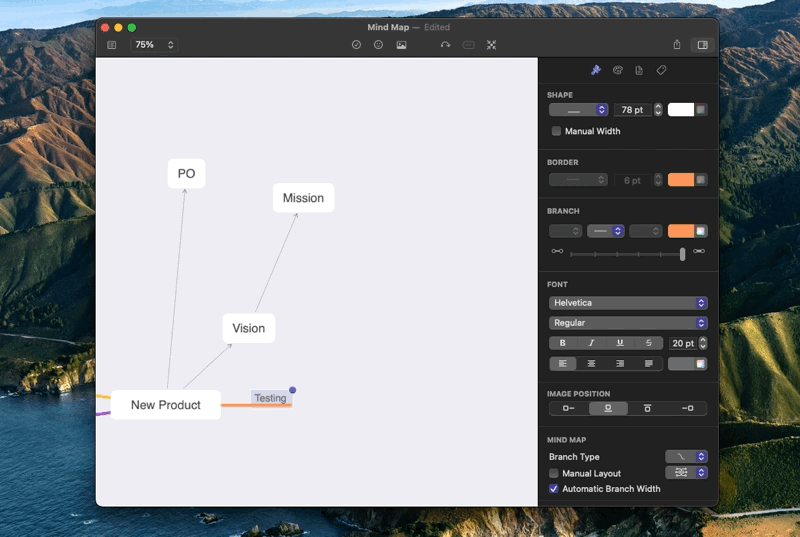
From the various threads and sub-threads of the idea, should emerge a solution, or series of steps that you and anyone else involved can implement. The most effective mind maps lead to actionable outcomes, which is a sign of a positive mind mapping session.
If MindNode does not work for you for some reason, we recommend you trying Muse, which is also available on Setapp. The app has similar functionality yet provides a more multimedia-rich experience.
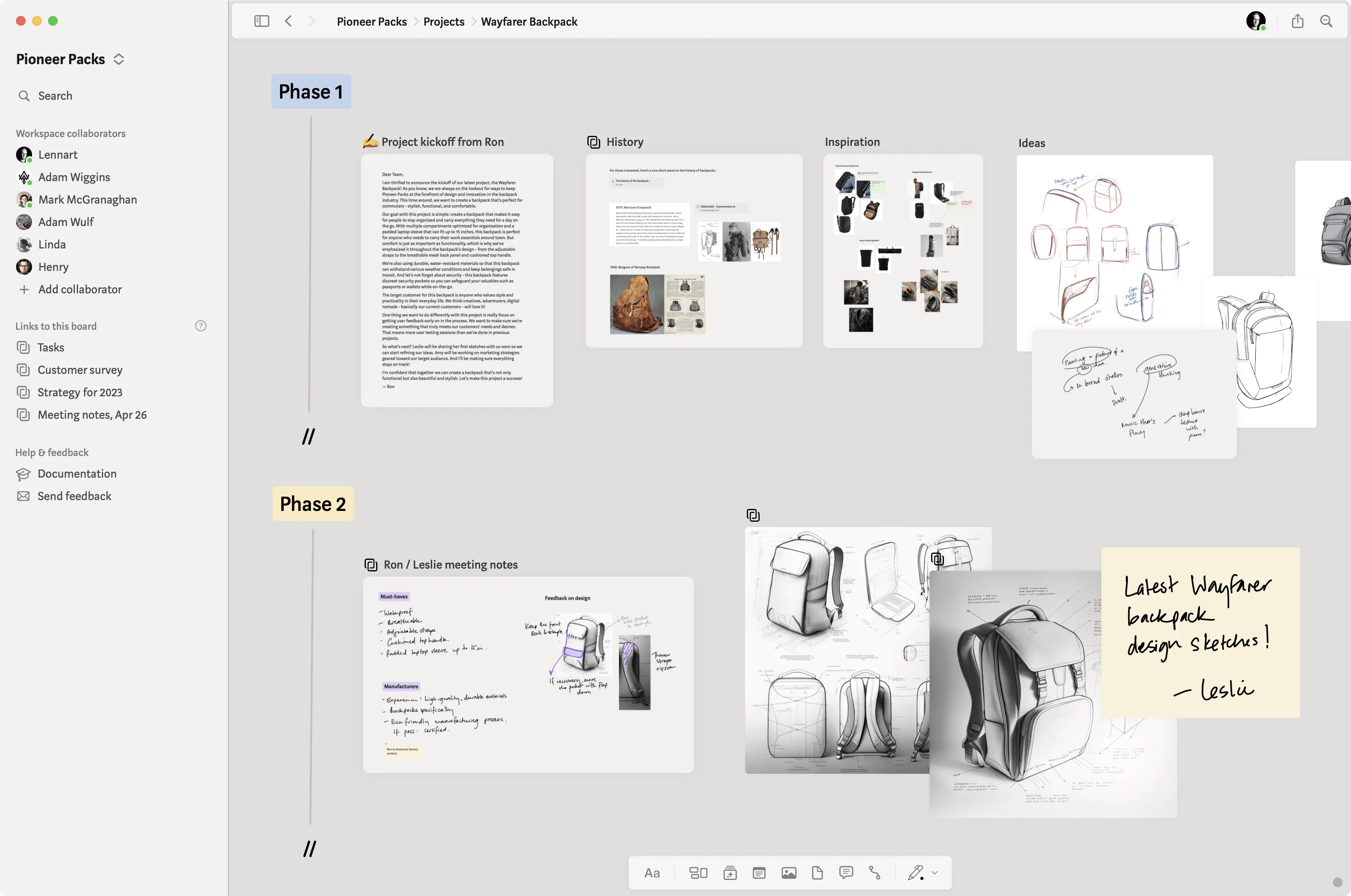
Questions and answers
Why is mind mapping better than taking notes?
It’s not, actually. For some projects and tasks, you need to capture the ideas and expand on them or analyze a large piece of information. That’s where note-taking is enough. Mind maps will work better for brainstorming sessions or any types of activities where you have to come up with ideas.
If I create a mind map on Mac, will it look distorted on mobile?
The bigger your mind map grows, the more squeezing and scrolling you have to do. You don’t have to worry about mobile resolution, though. The majority of mind mapping apps — including those mentioned in the article — have their iOS counterparts.
Are there any visual thinking guides that help me create better mind maps?
Check out Dan Roam’s approach to visual clarity. He’s an inspiring teacher when it comes to transforming ideas into visuals. If you use an advanced mind mapping app, it will guide you through the process. For instance, MindNode has one of the most extensive sticker libraries. So you’ll have many choices on how to replace the text with visuals.
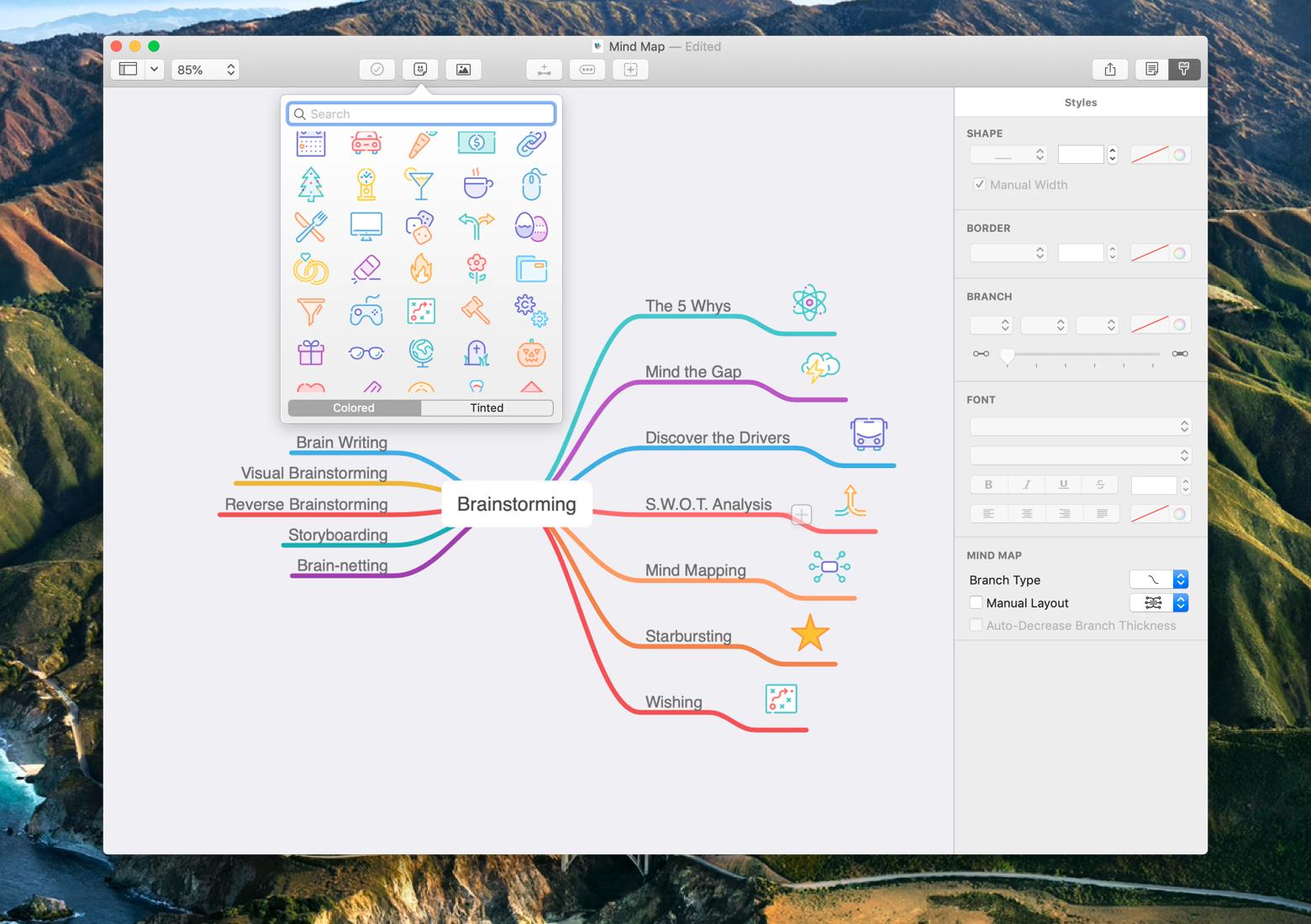
How many branches/sub-branches can I add to a mind map?
The sky’s the limit. Or, rather, clarity is the limit. In MindNode and MindNode, you can add as many branches as you like — just make sure they don’t block up the others.
Is there a universal tool that handles mind maps of any complexity?
Most of them do. Your goal is to align the tool and the purpose. If your desired output is a collection of notes you can use for study, a book summary, or an extensive article analysis, MarginNote is perfect. For visual projects, MindNode will cover the needs.





